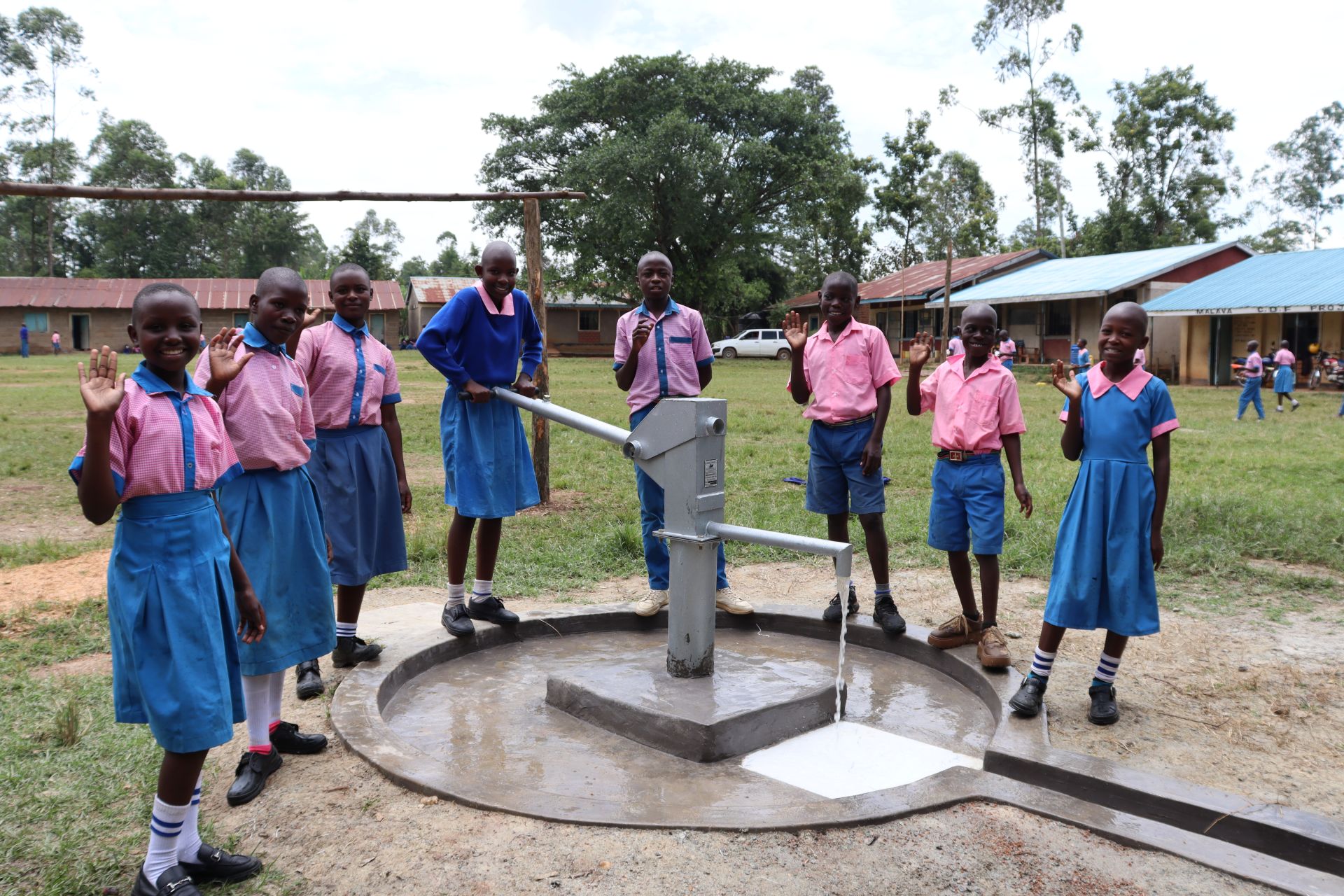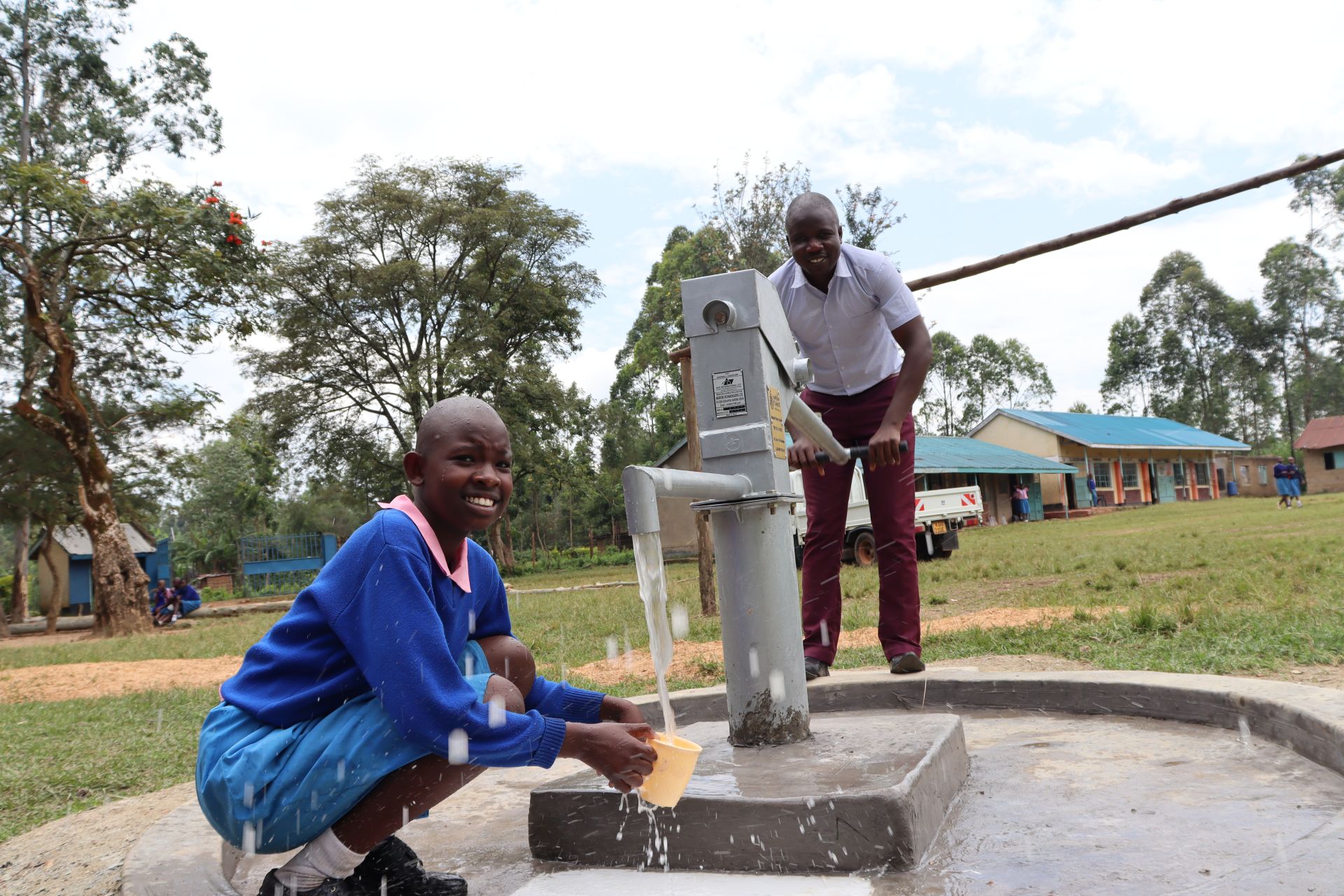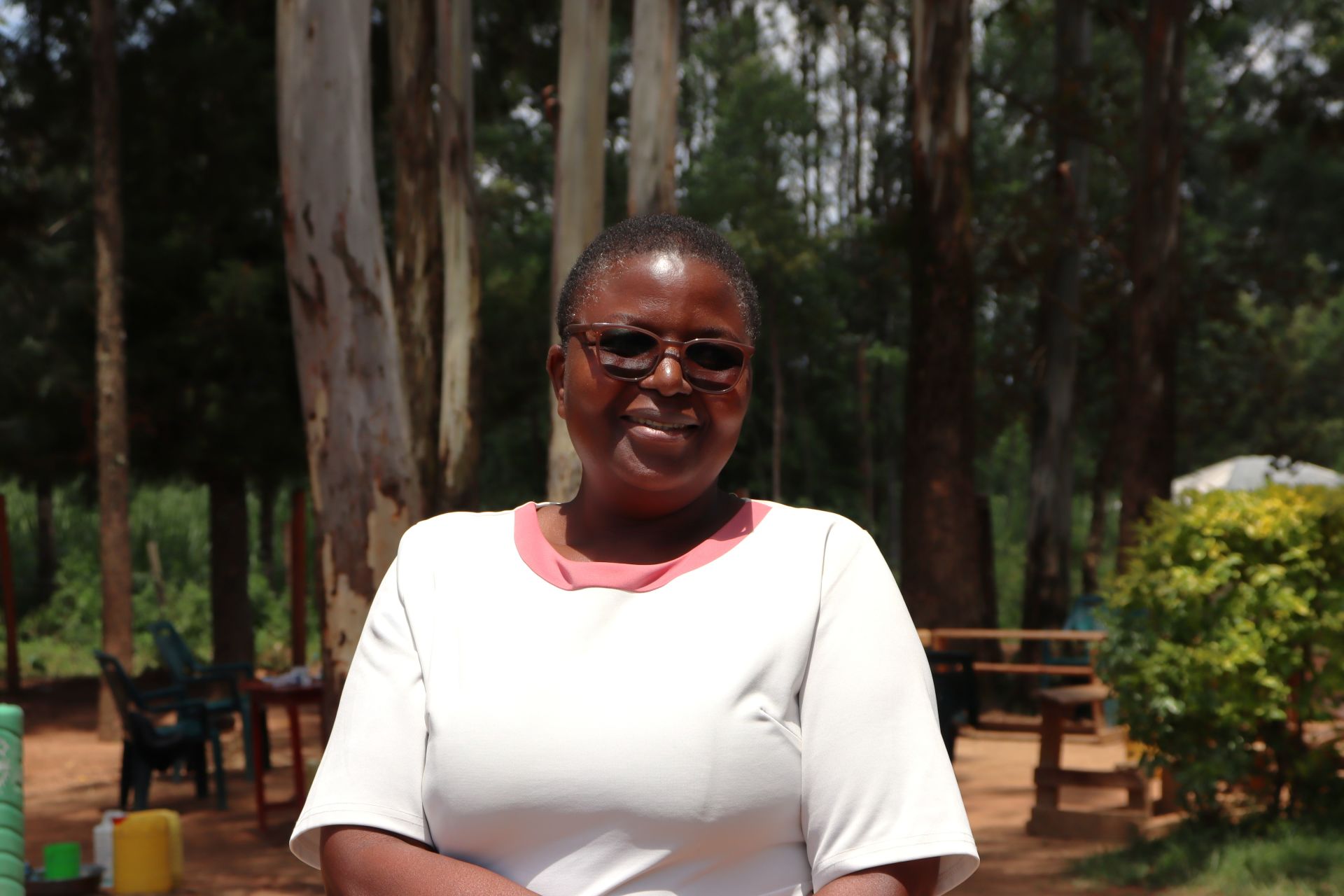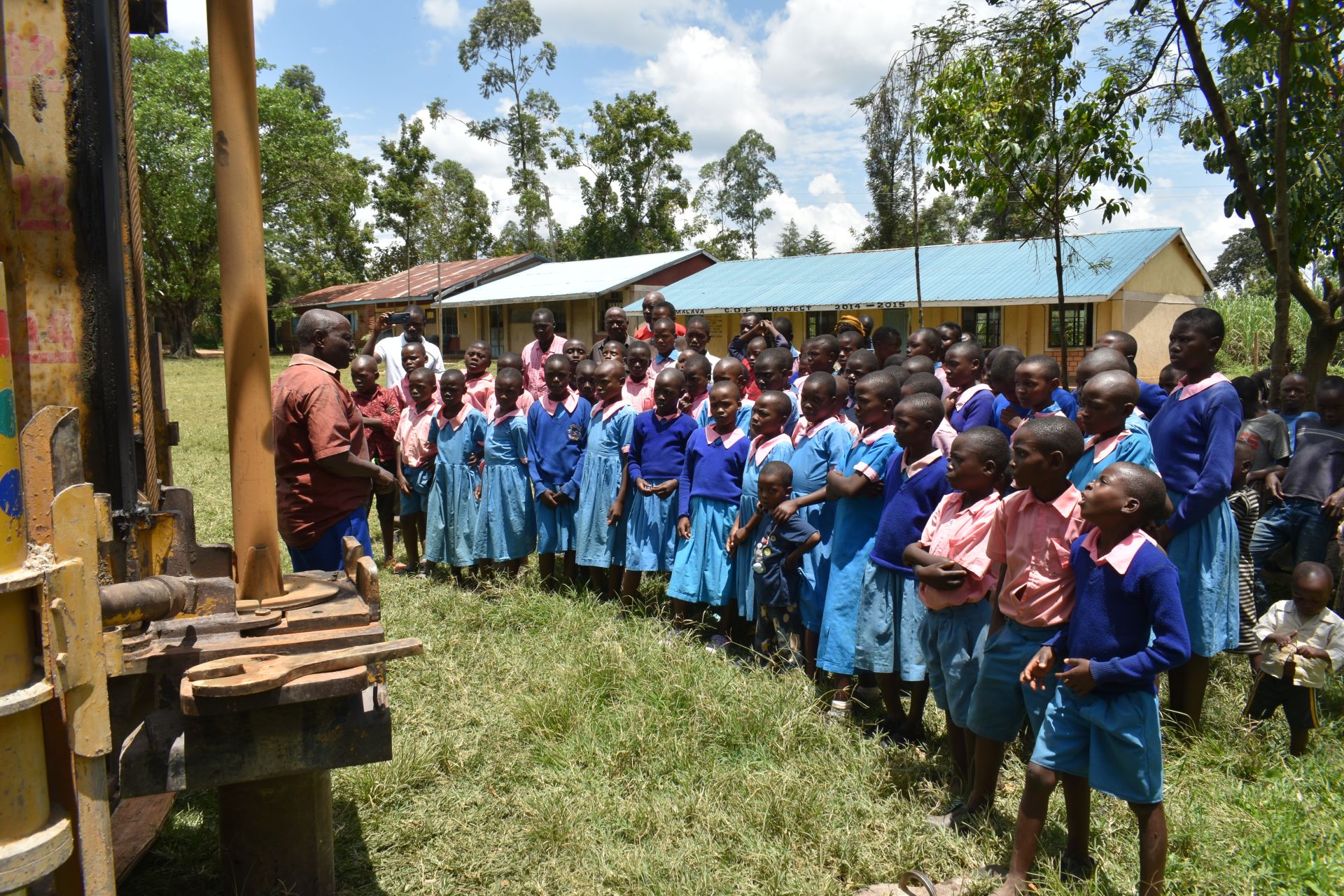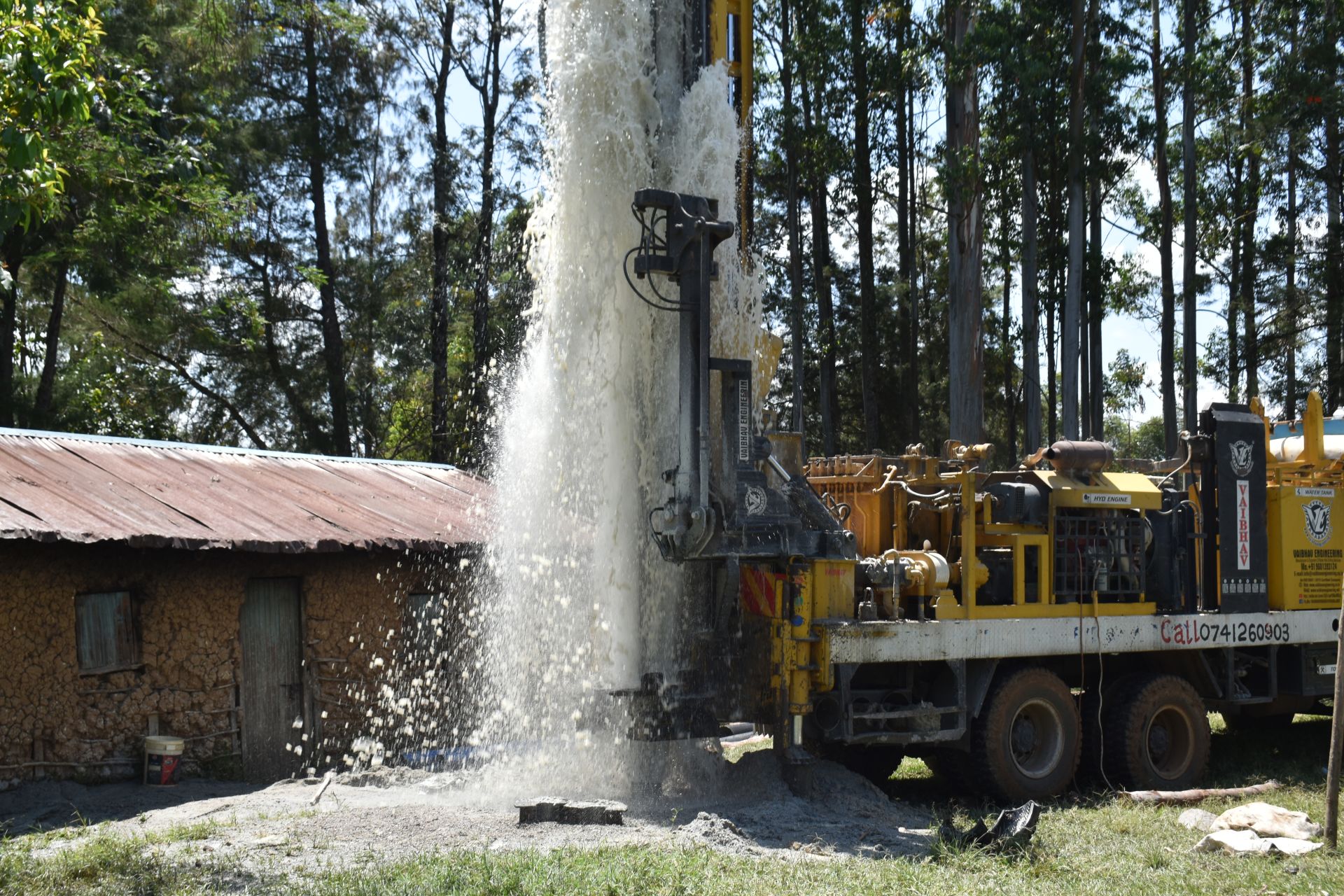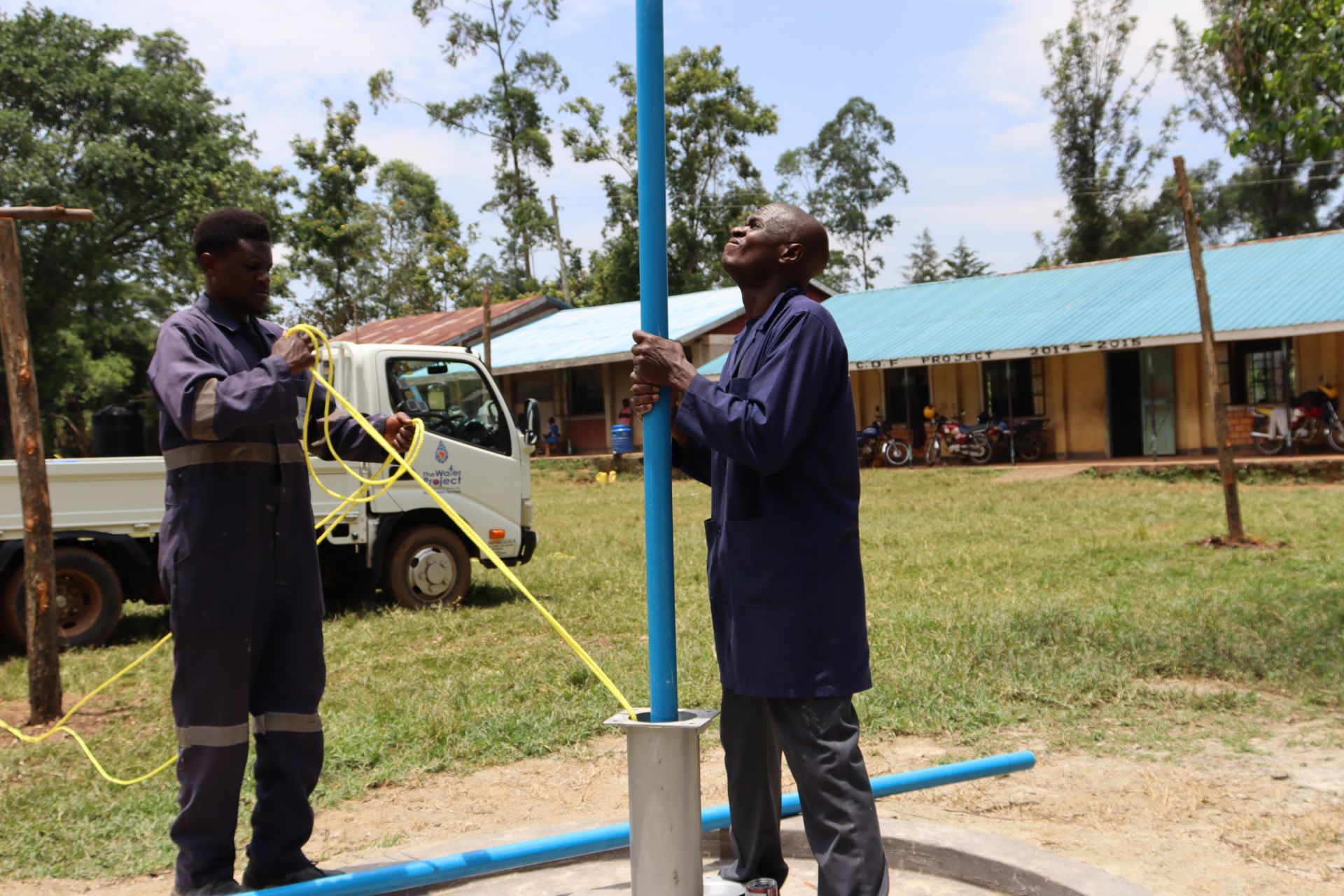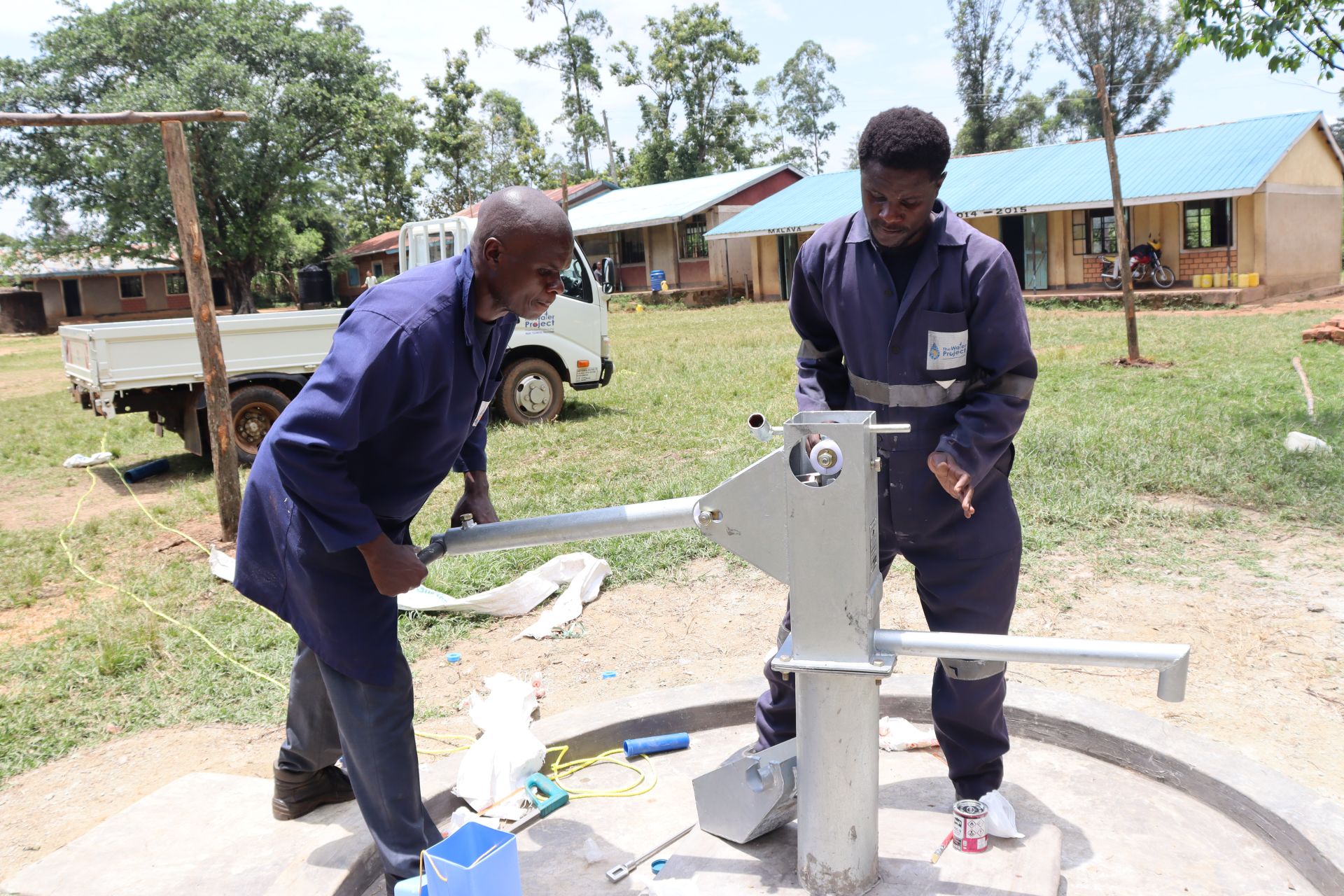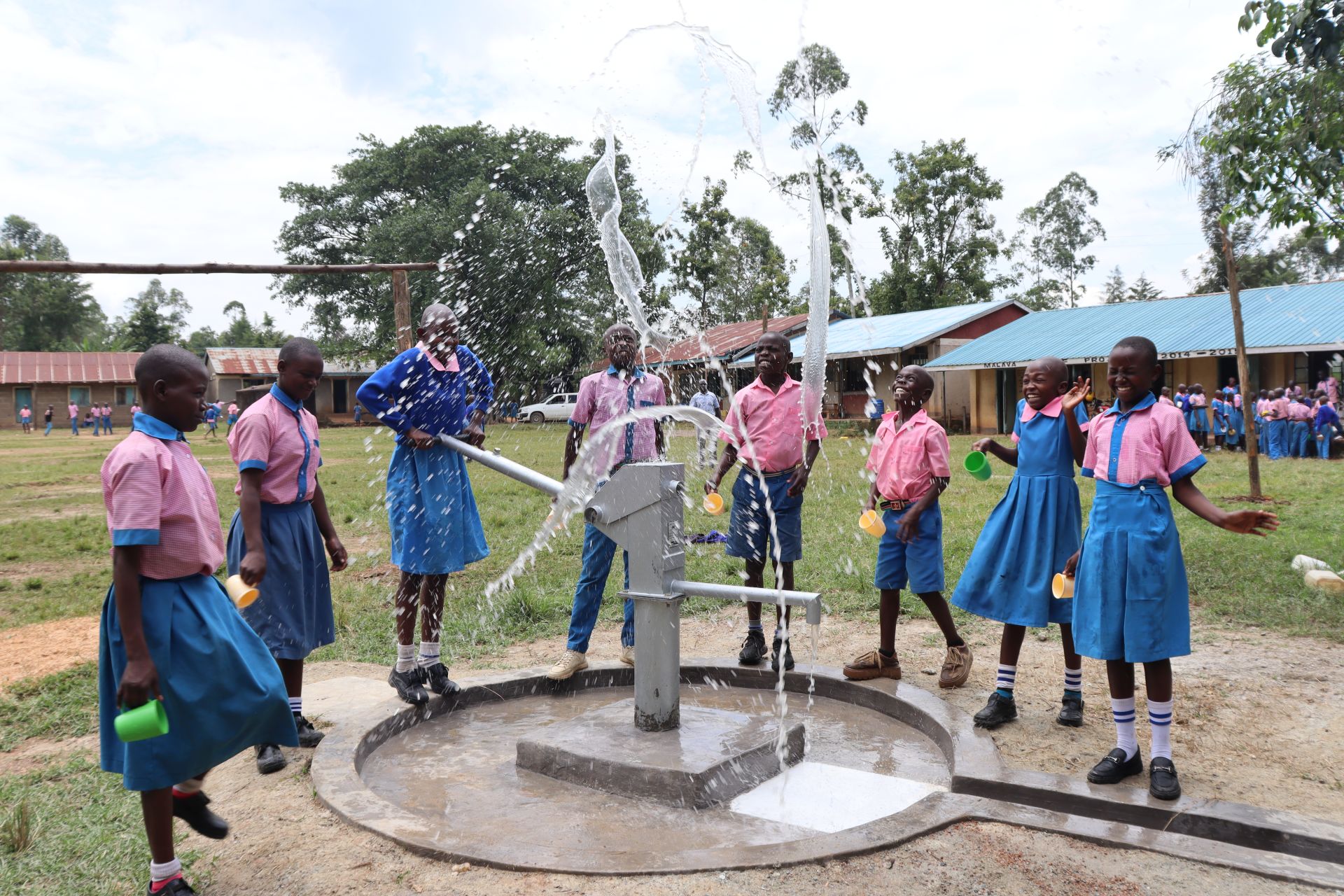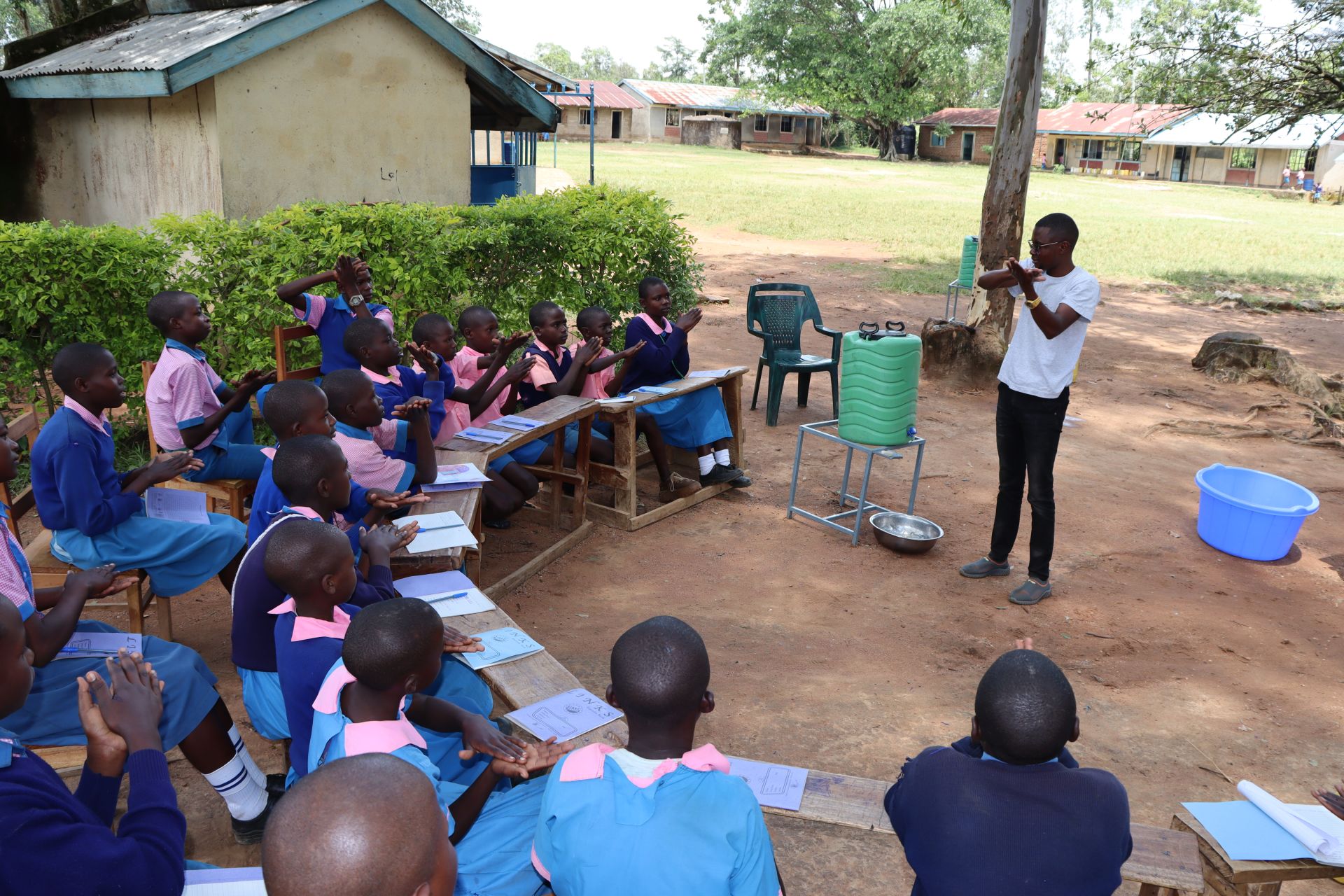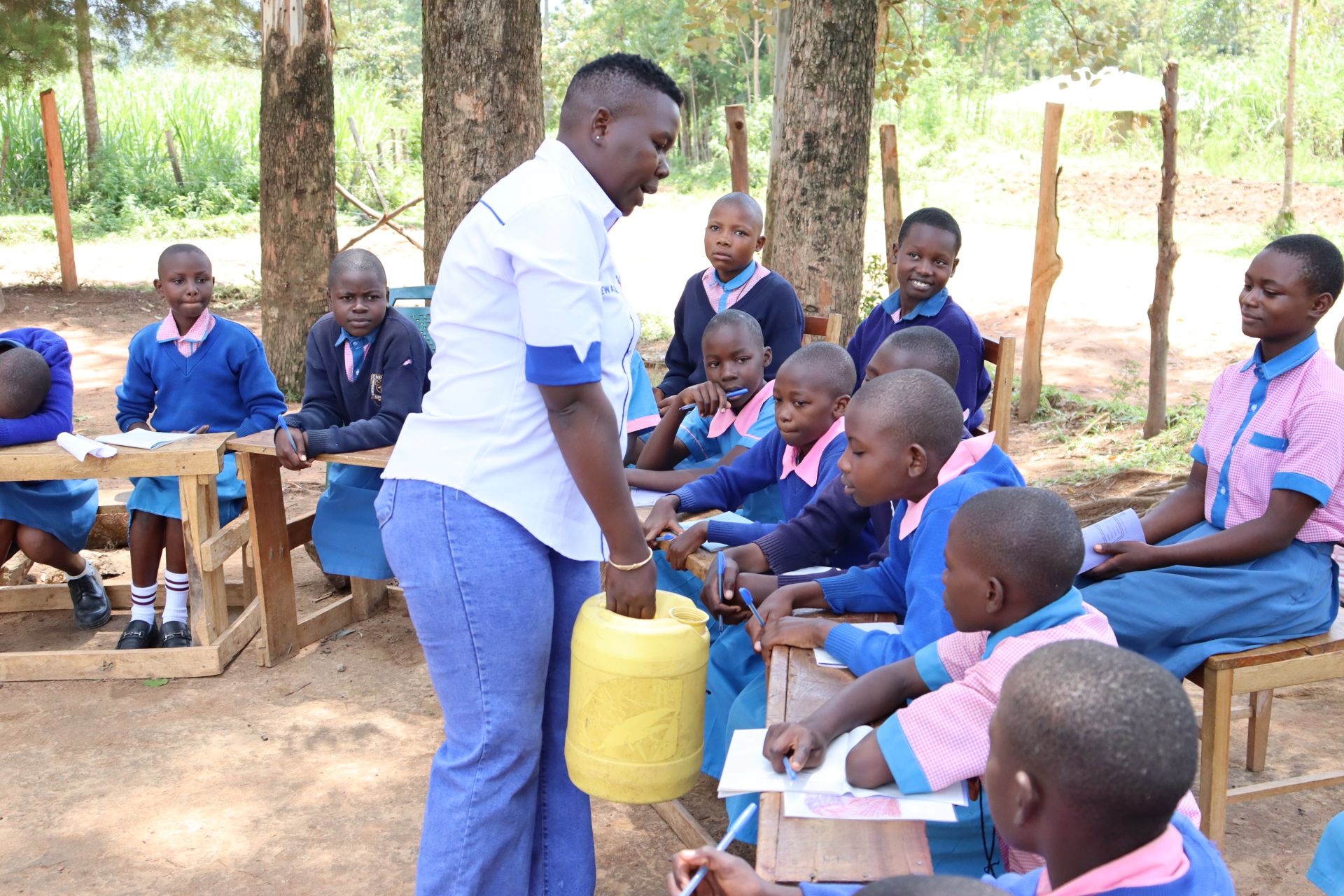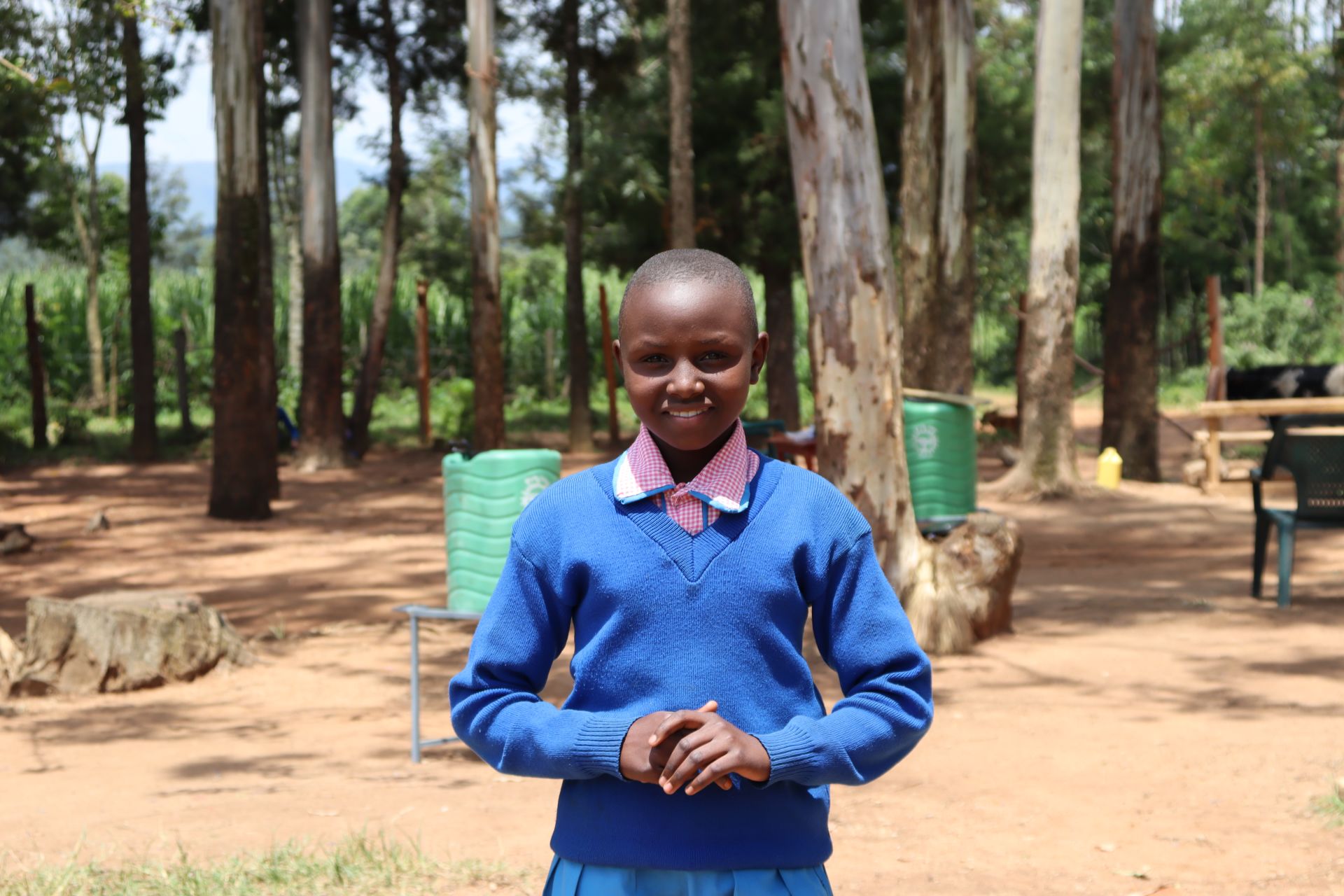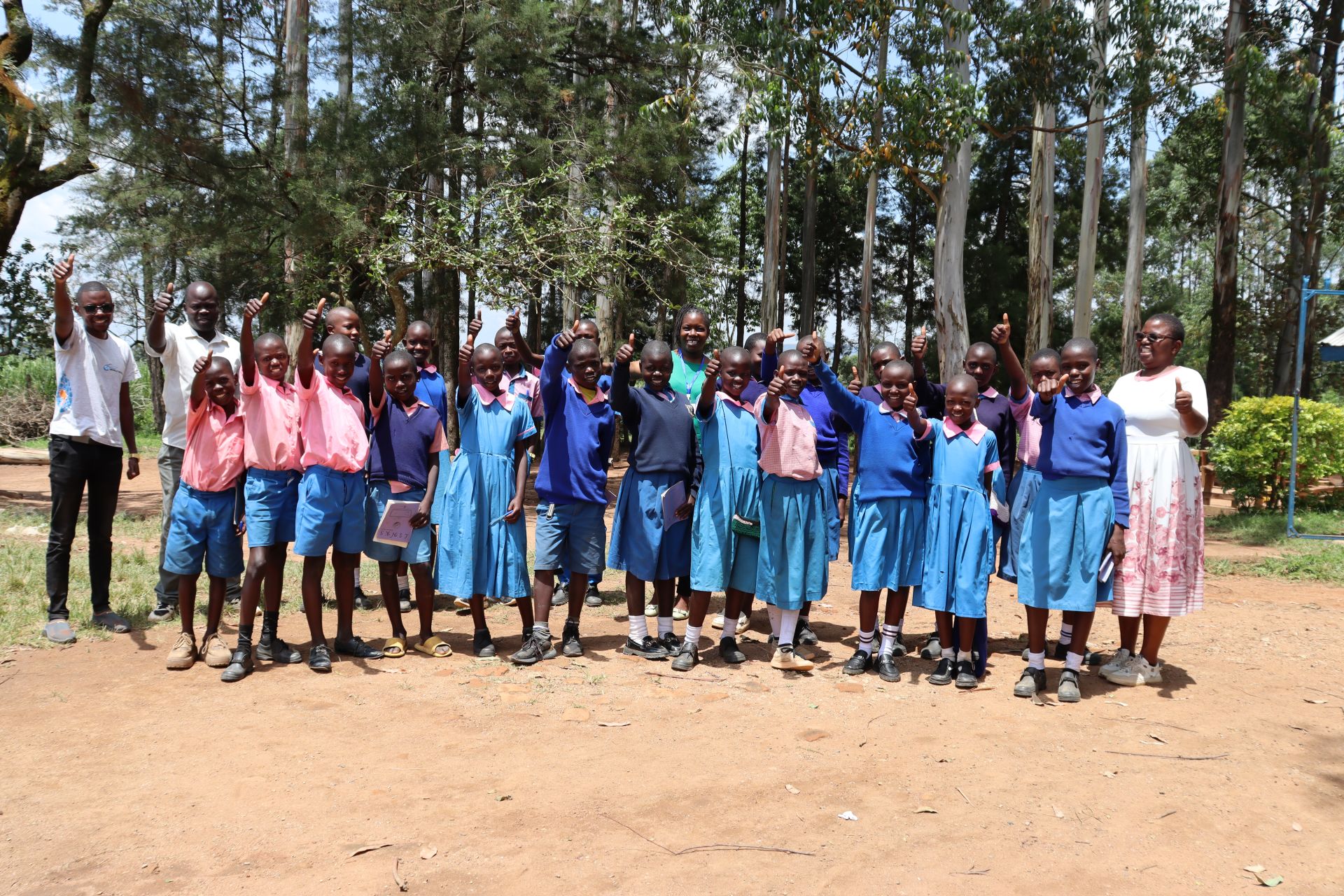The Mahusi Primary School's rainwater harvesting tank on campus runs dry, leaving the 498 students and 17 staff members with no other option than to go to a distant spring, which devastates their health.

The distant, contaminated spring.
"The community members reported that whenever they drink water from the spring, they experience severe headaches and stomachaches, which [makes it] difficult at times to get proper medication. There is a high possibility of contracting cholera and bilharzia, which are deadly diseases," shared Field Officer Gladys Chepkokir.
Facing the threat of illness daily is draining, to say the least. Teacher Andrew Muyela watches his students and co-workers live this experience, as does he.

Teacher Andrew Muyela.
Mr. Muyela described a time recently when a co-worker fell ill.
"It was a terrible experience. One of the staff members was experiencing abdominal pains and had to be given a painkiller before being taken to the hospital for proper medical attention," he said.
He went on to list just a few of the consequences of their water source.
"Missed school, [and] water-related illness is the major cause of absenteeism resulting in students' poor performance and teachers not [being] able to cover [the] syllabus on time. Also, it leads to financial constraints, as some diseases are costly to treat," said Mr. Muyela.
Sickness isn't the only major symptom of the Mahusi Primary School's water crisis.
Due to the distance, it can sometimes take up to three hours to collect water from the spring. That is three hours of their school day gone. And they rarely make just one trip.

Heading to the spring to collect water.
"Students are impacted negatively when there is no water at school. Their concentration level in class is much affected; hence, [they are] forced to look for water during class time, leading to time wastage. Staff members have to stop learning activities to accompany students to the spring; hence, a lot of time is wasted in the process, and in the long run, [the amount of] water is never enough," he continued.

Student in class.
Installing a borehole well on campus will be the beginning of change for The Mahusi Primary School! With clean, quickly accessible water, Mr. Muyela will have time to teach his students and inspire them to succeed. Water will no longer consume their time and health. Instead, it will enhance their lives and give them the tools they need to thrive.
Steps Toward a Solution
Our technical experts worked with the local community to identify the most effective solution to their water crisis. They decided to drill a borehole well, construct a platform for the well, and attach a hand pump.
Well
Abundant water often lies just beneath our feet. Aquifers—natural underground rivers—flow through layers of sediment and rock, offering a constant supply of safe water. A borehole well is drilled deep into the earth to access this naturally filtered and protected water. We penetrate meters, sometimes even hundreds of meters, of soil, silt, rock, and more to reach the water underground. Once found, we construct a platform for the well and attach a hand pump. The community gains a safe, enclosed water source capable of providing approximately five gallons of water per minute. Learn more here!
Handwashing Stations
Alongside each water source, we install two gravity-fed handwashing stations, enabling everyone at the school to wash their hands. Handwashing is crucial for preventing water-related illnesses within the school and community. Student “health clubs” maintain the stations, fill them with water, and supply them with soap, which we often teach them how to make.
Latrines
We will construct two Ventilated Improved Pit (VIP) latrine blocks designed to prevent fecal disease transmission. Each latrine features a cement floor, making it easy to use and clean regularly. Three stalls will serve the girls, and three will serve the boys.
School Education & Ownership
Hygiene and sanitation training are integral to our water projects. Training is tailored to each school's specific needs and includes key topics such as proper water handling, improved hygiene practices, disease transmission prevention, and care of the new water point.
To ensure a lasting impact, we support forming a student health club composed of elected student representatives and a teacher. These clubs promote hygiene practices schoolwide and keep handwashing stations well-stocked. This student-led model encourages a sense of ownership and responsibility.
Safe water and improved hygiene habits foster a healthier future for everyone in the school and the surrounding community.

 Borehole Well and Hand Pump
Borehole Well and Hand Pump
 Rehabilitation Project
Rehabilitation Project












